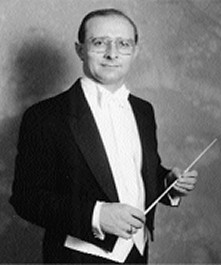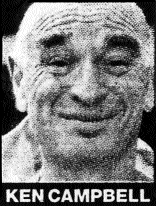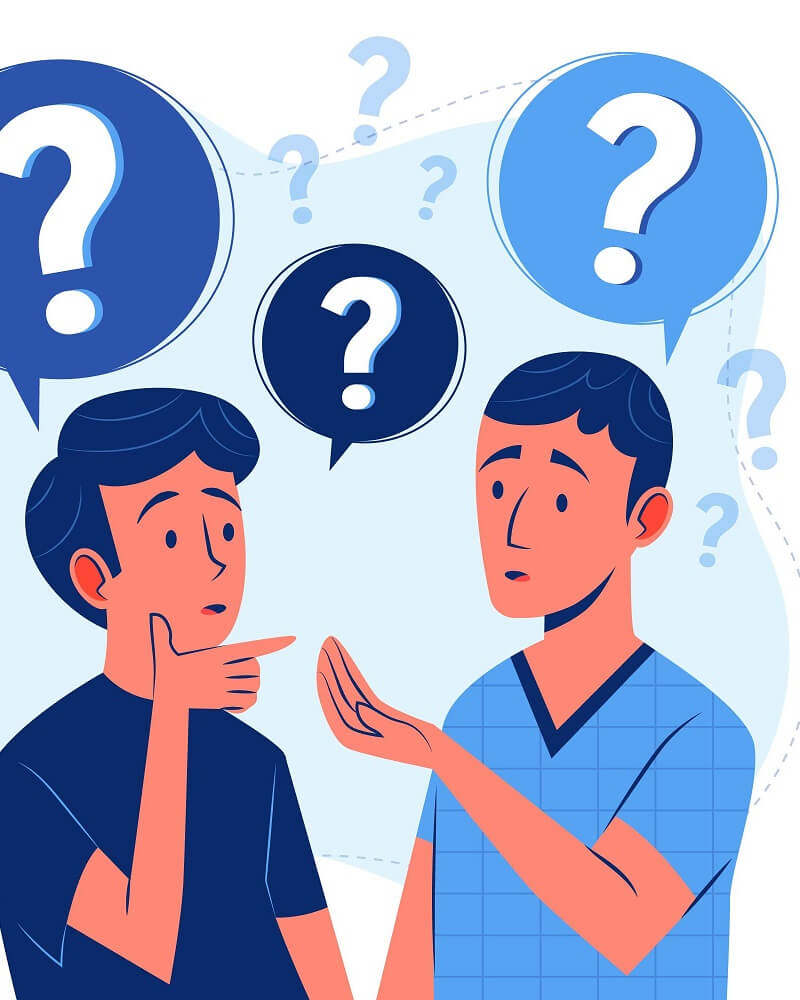Book Blaster Issue 6
PhotoReading: “a vital tool for police force”
Tim Roberts, a police sergeant currently serving with the Cheshire Constabulary, has been knocked out with the results he’s been getting from the PhotoReading Whole Mind System. So much so, that he’s brought it to the attention of the national police force by reviewing it for a top police publication.
Constabulary News is the largest circulation police magazine, reaching 60,000 officers in the UK alone. It’s expected that his article will lead to the PhotoReading Whole Mind System being adopted by forces throughout the country — because police stations around the country are buried under a mountain of policy papers and reports.
Tim comments: “Paperwork is the flea on the back of modern policing. Many officers and support staff spend over half their working day just ploughing through page after page of text. Now there is an answer. It’s called PhotoReading, and it’s reading for the 21st century. It’s a new an reassuringly simple reading techniques that will do for reading what the tractor has done for agriculture. PhotoReading works wonders, PhotoReading is the breakthrough we’ve been crying out for. It does work wonders. Once you’ve learned to PhotoRead you can effortlessly read at speeds of 25,000 words a minute.
PhotoReading will be a vital tool for the police service, it’s easy to learn and uses the power of the whole brain by gently removing our reading limits such as conversation speed. the secret of PhotoReading is a relaxed yet methodical approach, and a slight adjustment of vision to include peripheral vision, which subconsciously absorbs the text of entire pages at a glance, mental photography. Efficiency is boosted, stress reduced and enjoyment doesn’t suffer.
PhotoReading was invented by Paul Scheele. His book PhotoReading is fascinating, and his extensive and energetic mixture of audio cassettes and workbooks really does deliver. In one of the first exercises you are given the skills to blast through a dictionary and afterwards remember where amidst the hundreds of pages certain words are. This particular learning pack does work, and the bonus is it’s flexible, fitting in with family or shift demands.
As the Police Service aims to increase each one of its abilities the enlightened manager may wish to acquire some PhotoReading courses to encourage those interested to develop their potential and contributions. As psychologist Dr Owen Caskey said, “Success in learning heightens self-concepts and promotes personal adjustment and self-confidence.” This seems to be a classic win-win situation for the police.”
We’ve heard from Tim that the PhotoReading Whole Mind System is now being shared with the rest of the Cheshire Constabulary.
 Learning musical scores faster
Learning musical scores faster
Dr Andrew Padmore, an International Choral and Orchestral Conductor is astounded with the success he’s been having with PhotoReading.
His demanding schedule means he often has to learn musical scores on long-haul flights around the world. Many’s the time he’s had to sit up through the night in hotel rooms preparing for concerts on the following day. That’s a thing of the past, thanks to PhotoReading, but it was a slow start. Dr Padmore has had the PhotoReading course since the summer but was initially “very disgruntled” and “found the dictionary game slow and tedious.”
However, all of a sudden he became aware that things he’d read quite casually, were coming back to him. “PhotoReading has increased my learning ability beyond belief” he enthuses. “I decided to embark on the PhotoReading course to speed up my ability to absorb information and to assist in learning the languages of the countries I am conducting in. Not only did I immediately find an incredible increase in my comprehension ability, but I applied the system to my learning of musical scores, and again noticed that my ability to absorb information and to process it intuitively has dramatically increased, so much so that I am presently learning a Malaysian language. I no longer spend hours sitting up through the night learning my musical scores — I now have them learned thoroughly and am enjoying full nights of sleep.”
 TV presenter conducts best interview — thanks to key PhotoRead techniques
TV presenter conducts best interview — thanks to key PhotoRead techniques
Ken Campbell, presenter of the Channel 4 documentary series Brainspotting, used PhotoReading to prepare for a filmed interview with Oxford philosopher, Derek Parfit. “The interview was easily one of the best. I fancied Parfit was slightly taken aback that I knew so much. Philosophical parables kept springing into my mind — and these are in Parfit’s book”.
Ken told his story on Friday, 22 November 1996 in his regular column in the Guardian newspaper. “A week before the Channel 4 programme I was given Parfit’s book to read. It’s a daunting tome. Parfit’s hobby is taking gloomy sepia photos of Venice, and one of these is the front cover. Reasons and Persons is 503 pages of main text, plus 30 pages of notes; the print is small — each page is approximately the word count of this article.
I rang up a chum who actually knows something about philosophy. He said: “Parfit is the Big One.” But have you actually managed to read his book, I said. “I’ve got it and I shall be digesting it over the next 20 years.” “20 years!?!” “That’s reckoned to be fast! — This is the book, Kenneth!” (Six days to go to the interview with the great man.)
I keep junk mail in a pile until it’s a foot or more high and then I gorge on it. Reasons and Persons was on the desk, open at its impregnable table of contents.
Although the junk mail pile was only up to 9 inches, I decided it was time to devour it. And in it was this, from LifeTools:
Dear friend,
Blast through books at up to 25,000 words a minute — that’s the power of PhotoReading!
I Barclay-carded the money over the phone to LifeTools (it’s not cheap) who promised to rush me the course. While I was waiting for it to arrive I did the maths. If I could master PhotoReading I could blast through Reasons and Persons — including Appendices, Notes and Bibliography — in seventeen and a half minutes.
As soon as the course came (four days to go), I went for it. the trick is to lodge the target book in your unconscious mind and then develop the knack of accessing only the bits you need — there’s room for whole libraries in there! In fact it’s not really “reading” at all, it’s a whole other biz: first you’ve got to find your phantom sausage. Look at something distant and static. Now in front of your eyes bring your two index fingers together, maintaining distant focus — and you’ll see it: your phantom sausage (it’s due to the divergence of vision.) And that’s how you do it — you look kind of past, kind of through the book and a phantom sausage page appears and that’s all you bother with. As soon as you get it you turn the page — don’t stop and read anything or it will interrupt your lack of concentration.
There is of course a lot more to it than that. You have to practise page-turning — important to keep up a relentless rhythmic momentum. And you have to develop a tangerine on the top of your head — an imaginary tangerine (actually a few inches above your head) — and you have to be aware of your tangerine throughout the Bookblast.
My plan was to Blast Parfit’s book a half hour before the interview, for which I had requested a room where I could be on my own. My worry was the tangerine — being aware of an imaginary tangerine above your head constantly throughout the proceedings is not easy. The interview was easily one of the best. I fancied Parfit was slightly taken aback that I knew so much. Philosophical parables in Star Trek science fictional mode kept springing into my mind and I assumed at first that these came from me, stimulated into being by my bizarre sausage and tangerine Blasting ritual. But no — these are in Parfit’s book. Don’t get put off by the gloomy cover, this is up-to-the-mark philosophy. I would hazard this: if all my readers did the Bookblasting course and Blasted Parfit as their first test run, the world would be a measurably improved place.”
We’ve just finished speaking to Ken on the phone and this is what he told us:
“My three-part Channel 4 series was about consciousness. Not just knowing — but knowing that you know. Ferrets, for example, know, but don’t know that they know. I interviewed respected thinkers like John Lilly, John Serle and Marvin Minsky for the series. Consciousness is a stunning and miraculous subject, but the task looked so daunting. The researcher, who had a background in Philosophy, told me it would take 20 years to crack — and I had a week. I couldn’t even cope with opening the book but realised I had to go for it as Parfit is such a great man.
PhotoReading was extremely easy to do and not like swotting up. I found the whole process of PhotoReading the book exhilarating. During PhotoReading I was getting really light-hearted ideas into my mind in a Star Trek fashion. Was it really me coming up with them or was it the book. I didn’t think there was anything lighthearted in it — but as I said in the article, these ideas were in fact, in Parfit’s book.
My background is showbusiness. I’ve acted a bit, written plays and shows and directed them. I’ve also written the odd TV play and film. In the last 10 years I’ve done a lot of one-man shows — they have quite a following. I’ll certainly PhotoRead the next time I’ve got to read something substantial. I already use some of the little tricks it’s taught me.
Subsequent to doing the course my regular reading speed has doubled for sure — or even more than that. I’m happy to pay full attention to a book for a lot of hours with a pen in hand. I write all over them — so I couldn’t sell them. A book that would take two weeks would now take me two days to get through.
I’ve been telling everybody about PhotoReading, including Trevor Nunn, who is about to run the National theatre. He has vast amounts of scripts to get through — so I’m urging him to learn to PhotoRead, straight away.
PhotoReading — getting the shift
Once you’ve got the knack, PhotoReading seems the most natural thing in the world, but so does juggling — when you can do it. It’s doing it that first time that can cause problems, writes one of our customers, Paul Jones.
Watching as people master PhotoReading I’ve come to the conclusion that everyone has a different hassle with the paradigm shift involved as the one that lets you move from linear reading to a holistic approach. “PhotoReading doesn’t work and you said it did”, D, a well respected publisher accused me when I visited him a while back. While I was trying to think of a suitable defence, a sub-editor came in with some proofs. Immediately D grabbed up a red pen, frenziedly scribbled on the copy and handed it back with the comment, “That’s how it should be…” I saw my opportunity to propound the gospel according to PhotoReading.
“A good article, was it?” I asked.
“Yes, he’s made some good points there, but it needed tidying up.”
“How do you know? You only glanced at it for a second.”
D doesn’t need it laying on with a trowel.
“I suppose that’s what you mean by PhotoReading”
You won’t be surprised to hear that D’s going to give PhotoReading another try.
Puerto Rico research into PhotoReading
A team of scientists in Puerto Rico headed by two nuclear medicine physicians, Irma L. Molina and Sandra Gracia, are studying the brain’s electroencephalographic (EEG) patterns and blood flow to better understand the physiology of PhotoReading. The purpose of the research is to evaluate the physiological changes in brain wave patterns and cerebral blood flow associated to visual (PhotoReading state) and auditory (psychoacoustics techniques) stimuli. their objectives are:
1) To identify the frequency of occurrence and the localisation of the different types of brain wave patterns (beta, alpha, theta and delta) during the PhotoReading state alone, psychoacoustics stimuli alone and the combination of both.
2) To identify specific patterns of brain flow during the PhotoReading state alone, psychoacoustics stimuli alone and the combination of both.
3) To evaluate the changes in the performance of different cortical brain areas after stimulation with PhotoReading alone, psychoacoustics stimuli alone and the combination of both.
PhotoReading gave me the edge I needed to get a new job!
Anthony Reynolds from Blackpool has written to tell us how PhotoReading had helped him succeed in his job search.
“I purchased the PhotoReading course some months ago and followed through the course as instructed. Although I could see the benefit in using the techniques I did not have the discipline to make it a way of life. However, recently I applied for a position as a Reliability Engineer, a specialist function for which I had no experience or knowledge and was invited to an interview. I had a vague idea of what the position would entail but I realised that I needed a more in-depth knowledge. the evening before the interview I had approximately an hour free so I visited my local library and previewed a book on Reliability Engineering. The interview was successful and I was invited along to a second interview.
For the second interview I had to give a 15 minute presentation on how I would see myself operating in the role and also I was to briefly explain one of the techniques involved in mathematically determining product reliability. The Sunday before the second interview I devoted to PhotoReading the book I had originally previewed.
Using mind maps, I prepared my presentation, which went really well, I was praised on my preparation and my ‘broad knowledge’ of the subject.
I was very pleased with this as my initial thought when I started looking through books in the library was that it was going to be very hard going because the subject was so technical and extensive. In the post the next morning was an offer for the job and the salary offered was considerably higher than we originally discussed.
I accepted the job and I am going to use the time before I start to PhotoRead many other books on the subject of Reliability Engineering to get myself really well acquainted with it.
Thanks LifeTools!”


